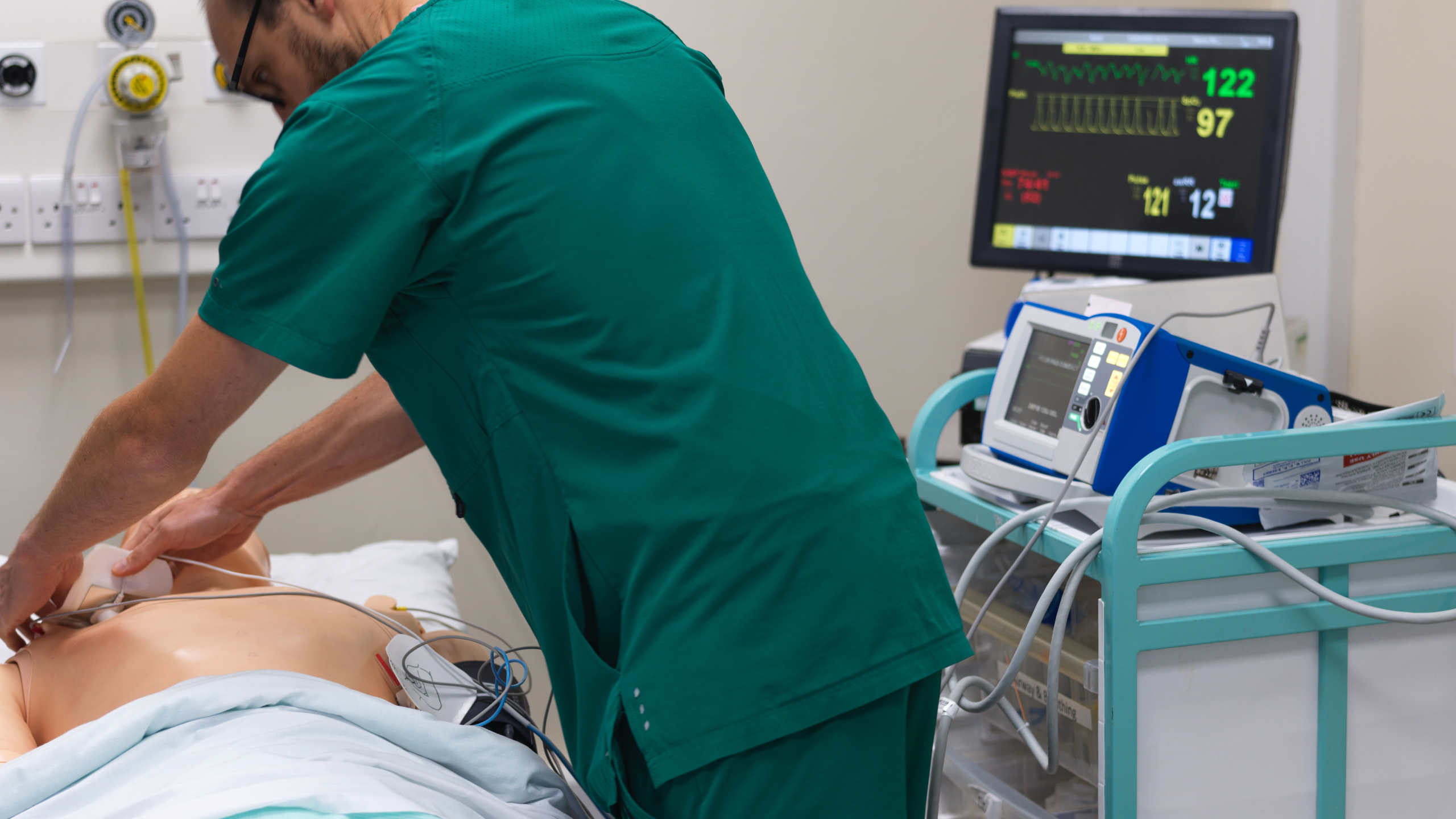
DC Cardioversion
Acute Care Common Stem (ACCS)Use this resource in conjunction with your real-world training

Experience Summary
In this 360-degree video, observe the procedure of performing DC cardioversion for a haemodynamically unstable patient with a broad complex tachycardia.
Clinical Context
Direct current (DC) cardioversion is a medical procedure used to restore normal sinus rhythm in patients with certain types of cardiac arrhythmias, particularly supraventricular tachyarrhythmias such as atrial fibrillation (AF), atrial flutter, and some forms of supraventricular tachycardia (SVT). It may also be used in cases of hemodynamically unstable ventricular tachycardia (VT) with a pulse. The primary goal is to electrically reset the heart’s rhythm by delivering a synchronised shock to the myocardium during the R wave of the QRS complex, minimizing the risk of inducing ventricular fibrillation.
Cardioversion is typically indicated when arrhythmias cause symptoms such as palpitations, shortness of breath, hypotension, or syncope, and pharmacological treatments have failed or are contraindicated. In atrial fibrillation, especially when of recent onset (typically <48 hours), DC cardioversion can be highly effective. If AF has been present for more than 48 hours, anticoagulation is crucial to prevent thromboembolism unless a transesophageal echocardiogram rules out left atrial thrombus.
Steps of Performing DC Cardioversion:
- Pre-Procedure Assessment:
- Evaluate the patient’s hemodynamic status, medical history, and duration of arrhythmia.
- Check for anticoagulation status if AF >48 hours.
- Obtain informed consent, explaining the risks (e.g., thromboembolism, skin burns, arrhythmia exacerbation) and benefits.
- Monitoring and Sedation:
- Place the patient on continuous ECG, blood pressure, and oxygen saturation monitoring.
- Administer short-acting sedation (e.g., midazolam or propofol) with or without analgesia.
- Ensure resuscitation equipment is immediately available.
- Electrode Placement:
- Apply defibrillator pads in anterolateral or anteroposterior positions.
- Ensure good skin contact and pad adhesion to reduce impedance.
- Synchronisation and Energy Selection:
- Set the defibrillator to "synchronized" mode to time the shock with the R wave.
- Select appropriate energy level: typically 100–200 joules biphasic for AF; lower for flutter or SVT.
- Shock Delivery:
- Announce a clear warning to staff before delivering the shock.
- Deliver the shock and reassess the rhythm immediately.
- Post-Procedure Care:
- Monitor for rhythm recurrence or complications.
- Continue anticoagulation as indicated.
- Determine the need for further rhythm or rate control strategies.
DC cardioversion is a cornerstone therapy for acute rhythm management and should be performed with precision and adherence to safety protocols to optimise outcomes.
Learning Outcomes
- Observe the procedure of performing DC cardioversion in a haemodynamically unstable patient with a broad complex tachycardia.
- Understand how to use the defibrillator for DC cardioversion.
- Understand the indications for DC cardioversion in adult tachycardia.
External Resources
